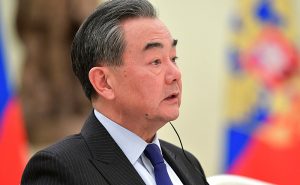Chinese Foreign Minister Wang Yi initiated his Southeast Asian tour at the beginning of this week, after he closed a six-day tour of Africa the previous week. Analysts believed that COVID-19 vaccine cooperation would be a top priority of the trip, Wang’s second to Southeast Asia since the beginning of the pandemic. But vaccines are only part of his mission; implementation of the Belt and Road Initiative and regional stability are also major items on his agenda.
So far, Myanmar, the Philippines, and Indonesia are the three Southeast Asian countries with the most cases of COVID-19. According to the WHO, the cumulative case counts are 858,043 for Indonesia, 492,700 for the Philippines, and 132,260 for Myanmar as of January 14. Vaccines are the key for them to prevent the virus from spreading in the coming months. Indonesia has so far received 3 million vaccine doses from China’s Sinovac Biotech. Myanmar and the Philippines have negotiated to purchase Chinese vaccines. During the first stop of his five-day tour, Wang promised Myanmar 300,000 doses of a Chinese vaccine against COVID-19. It can be expected that China will make a similar announcement during his visit to the Philippines from January 15-16.
Aside from vaccines, however, economic recovery after the pandemic is at the top of the agenda for both Chinese and Southeast Asian governments. Due to the adverse effects of the pandemic on economic growth, most of the Southeast Asian countries have to carry out economic rescue plans, in which foreign trade and foreign investment are significant components. For instance, the Myanmar government launched an economic rescue plan last year, leaning on the accelerated construction of Yangon New City, one of the three pillars of the China-Myanmar Economic Corridor (CMEC), in order to reduce unemployment.
Since most of the Southeast Asian countries rely heavily on foreign trade and investment, building closer economic ties with China would be the best choice for them to put their economies back on their feet. Actually, the 10 countries of Southeast Asia collectively became the biggest trading partner for China for the first time in 2020, overtaking the European Union. In the new context of the slowed spread of COVID-19 after vaccine rollouts, the implementation of BRI projects will be accelerated to boost employment and economic development in Southeast Asian countries.
On the eve of Wang’s visit, both China and Myanmar agreed to start feasibility research on the Mandalay-Muse railway, the backbone of the transportation system under the CMEC. During the meeting between Wang and Indonesian Foreign Minister Retno Marsudi on January 13, Indonesia asked China to import more Indonesian goods and invest in the $400 million Lambakan dam in Kalimantan Timur while Wang promised to coordinate China’s BRI and Indonesia’s Global Maritime Fulcrum vision. It is believed that some mega-projects under the BRI will get fresh momentum and return to normal construction after Wang’s visit.
But economic recovery cannot be attained without regional stability. Since the outbreak of COVID-19, the South China Sea has been the site of rising tensions between China and the United States as well as maritime standoffs between China and some claimant states in the disputed waters. Given U.S. President-elect Joe Biden’s harsh rhetoric toward China and the political changes in some Southeast Asian countries, Chinese scholars have increasingly been aware of the United States’ rising military actions in the South China Sea and its interference in the Code of Conduct (COC) negotiations between China and ASEAN, as well as unilateral oil and gas exploration in the disputed waters by some claimant states.
Hence, Wang’s trip is also aimed at stabilizing the SCS situation and strengthening maritime cooperation with Southeast Asian states. That’s why he chose to visit Myanmar, which assumed the roles of the coordinator of China-ASEAN relations and co-chair of consultations on the COC this year, as well as Brunei, which holds the rotating ASEAN chairmanship for 2021. As China wants to accelerate the COC negotiations, better policy coordination with these two countries would be beneficial. Moreover, China is also trying to upgrade relations with the Philippines and Indonesia by providing vaccines and economic benefits, so as to maintain peace and stability in the South China Sea.
Nian Peng is deputy director and associate fellow at the Research Centre for Maritime Silk Road, National Institute for South China Sea Studies, China.

































